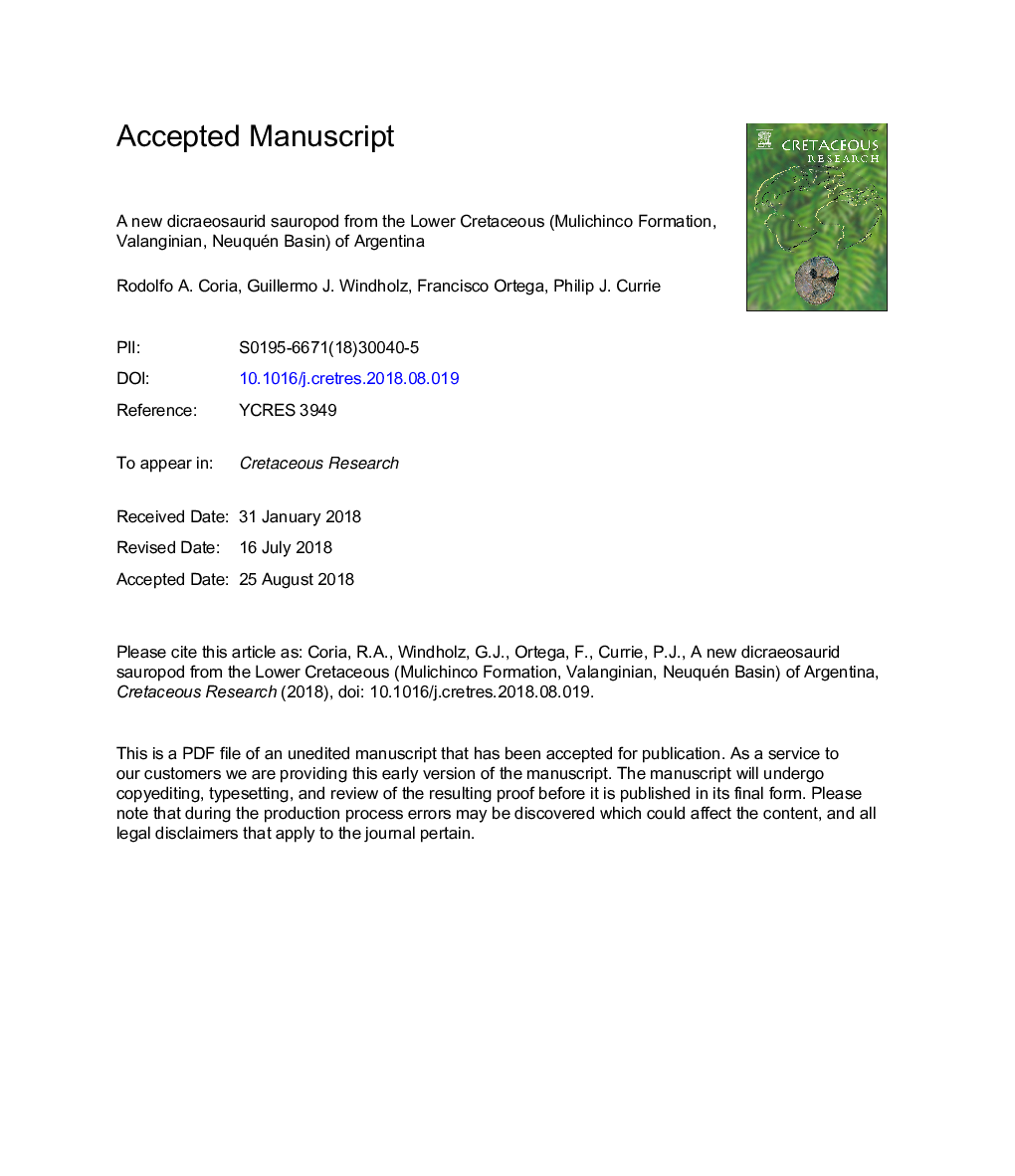| Article ID | Journal | Published Year | Pages | File Type |
|---|---|---|---|---|
| 10149885 | Cretaceous Research | 2019 | 51 Pages |
Abstract
A new dicraeosaurid sauropod, Pilmatueia faundezi gen. et sp. nov. from the Mulichinco Formation (Valanginian, Lower Cretaceous, Neuquén Basin, Argentina) is based on isolated skeletal remains collected from a single stratigraphic level, relatively close to each other, with unquestionable dicraeosaurid features in the axial elements. Pilmatueia faundezi is diagnosed by a unique combination of several features that include cervico-dorsal vertebrae with dorsoventrally oriented ridges on the anterior surfaces of the anterior centrodiapophyseal laminae, and posterior dorsal vertebrae with deep fossae at the bases of the bifid neural spines separated by a thick, low, sagittal lamina. Pilmatueia is recovered as the sister taxon of the late Early Cretaceous Amargasaurus cazaui. Pilmatueia increases our knowledge about the record of sauropods during the Valanginian, a period in which dinosaur diversity worldwide is poorly known.
Related Topics
Physical Sciences and Engineering
Earth and Planetary Sciences
Palaeontology
Authors
Rodolfo A. Coria, Guillermo J. Windholz, Francisco Ortega, Philip J. Currie,
